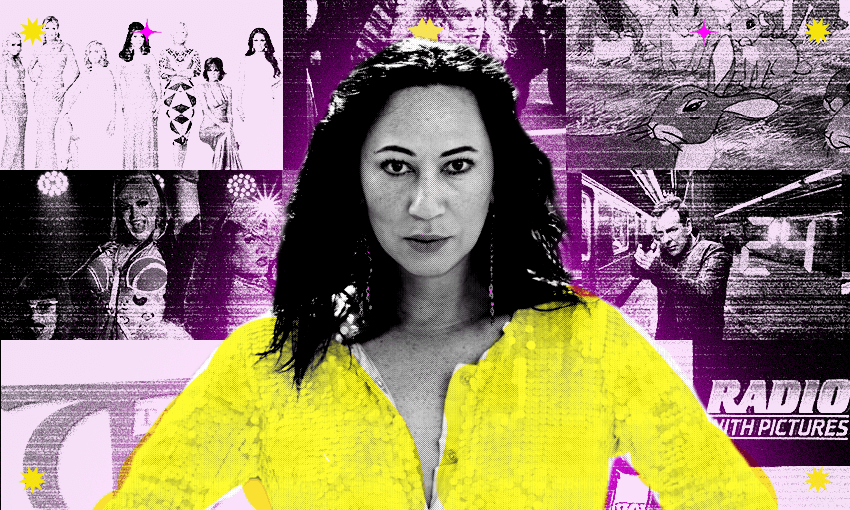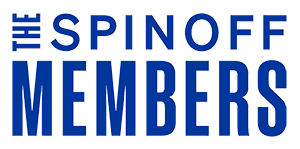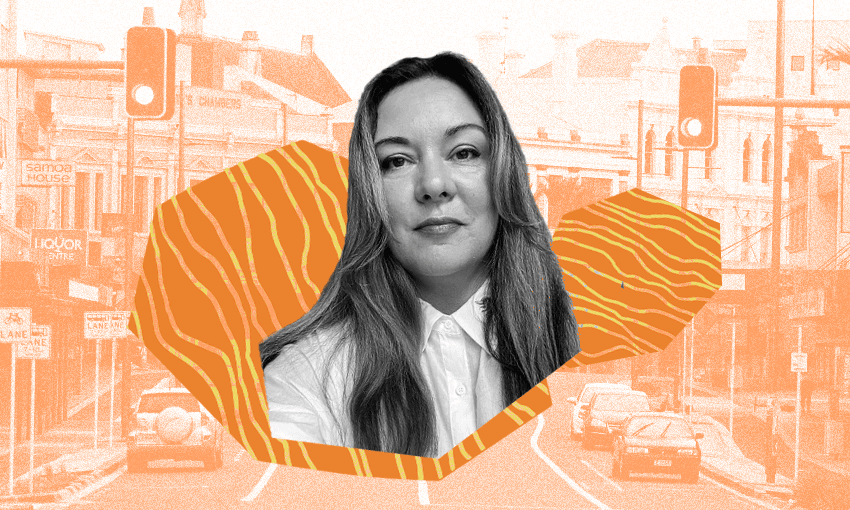Writer and director Ramon Te Wake takes us through her life in TV, including the trauma of Watership Down, the genius of 24 and the ‘dishiness’ of Simon Barnett.
Two decades ago, Ramon Te Wake got her first big gig in television as one of the hosts of Takatāpui, Māori Television’s groundbreaking queer magazine and current affairs show. Two decades later, the documentarian, writer, director, singer and presenter sees a full-circle moment in the launch of her new TVNZ series The Boy, The Queen, and Everything in Between.
“It really is a love letter to my community,” Te Wake tells The Spinoff. “It’s honouring my sisterhood, my drag world and my LGBTQIA+ takatāpui community.” The scripted series follows Jacob (Niwa Whatuira), who is forced to reconnect with his drag queen father Maxine (Adam Dehar, also known as Amanduh la Whore) after a stint in prison.
“So now you’ve got these men, who don’t know how to communicate with each other, trying to figure out how to accept and love and forgive,” she explains. “It really is a road to healing and reconciliation between a father and a son, but it just so happens to be set against the backdrop of Karangahape Road with glitter and drag queens and all that yummy stuff.”
Te Wake’s hope is that the series honours her community, while also reaching those in Aotearoa who may never have encountered this world before. “We want to reach Colleen and Gary in Invercargill,” she laughs. “It’s important for them to see it too, because it’s really just about love and forgiveness and acceptance. And I think we all need a bit more of that.”
Following the launch of The Boy, The Queen, and Everything in Between, we asked Te Wake to take us through her life in TV.
My earliest TV memory is… Television was the centre of our house growing up. I remember mum and dad telling me to go to bed, and me sneaking back out and slithering between the table and the chairs to watch Radio With Pictures. It was naughty, but I just loved watching pictures on the screen and I couldn’t get enough of it.
The TV show I would rush home from school to watch was… I’m of the generation who rushed home to watch 3.45 LIVE!. I loved The Smurfs, I loved Dungeons and Dragons, I loved Fraggle Rock. but I also was obsessed with music. Once we got VHS in the mid 80s, I was obsessed with taping everything. I diligently taped all of the music shows, pausing them precisely to not get the ads, it was an actual military event for me.
The television moment that haunts me is… I automatically think of how cruel Watership Down was. My body and my emotional palate was not ready for the level of grief that I experienced watching that. I was just sobbing, and I really think it set me up to fail for the rest of my life. It has stayed with me forever, and I will still cry at the drop of a hat about anything. It’s the goddamn rabbits fault.
My earliest television crush was… I used to have a big crush on Simon Barnett. He used to do that show called Face the Music. Maybe it’s because he was hosting a music show, but he was a very dishy man. I just remember watching and thinking “you are a very attractive man, Simon Barnett”.
My favourite New Zealand ad is… “It was the same day David.” It’s one of those drink driving adverts that, for whatever reason, our country does so brilliantly. This was the one where there’s this woman in the hallway and she was talking to somebody and she says “It was the same day David.” I can’t even remember why, but that became a catchphrase with me and my friends.
My TV guilty pleasure is… My favourite show on the planet is 24. I’m obsessed with it. I’m obsessed with the ticking of the clock, I’m obsessed with everything being told in a 24 hour window, I love that every episode is based on an hour. I just thought it was a genius idea when it came out in the early 2000s. I loved the deceit, I love the criminality of it all, I love the terrorism side of it, I’m obsessed. I’ve watched the whole series too many times to mention. It’s something I always go to when I need to relax, which is nuts.
My favourite television moment of all time is… Takatāpui was a series we created 20 years ago for Māori TV, and it was the first indigenous queer show in Australasia, and possibly in the world. That’s a pretty big deal, and to be a part of that was not only one of the most impactful moments of my TV career, but hugely important in what it cemented for the community. People still come up to me and share their stories about why they watched it, or how comforting it was to them. It’s nice to sit back 20 years later and realise we did some really good things.
My favourite television character of all time is… Jack Bauer from 24, Carrie Mathison from Homeland, Elizabeth Jennings in The Americans. If I could put them all together and make one character, that would be iconic. The more unhinged the better.
The most stylish person on television is… It’s got to be Carrie Bradshaw. Sex in the City was a huge show. I feel like it’s slightly problematic now – I was recently watching some of season four and I was cringing at how badly behaved her character had become, but she also just looked so fucking hot and her outfits were bang on.
The show that I will never watch, no matter how many people say that I should is… Breaking Bad. I’m far too gone. I’m obsessed with political espionage, and Breaking Bad doesn’t really seem like my bag of chips.
The last thing I watched on TV is… I could say Fargo or The Good Doctor, but the real answer, which now sounds embarrassing, is The Boy The Queen and Everything in Between, which everyone can watch now on TVNZ+.





